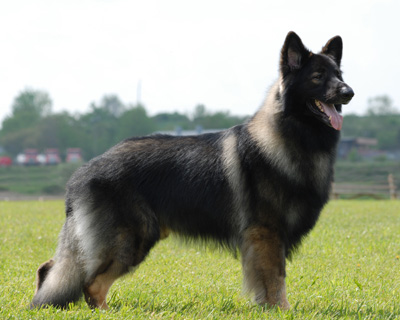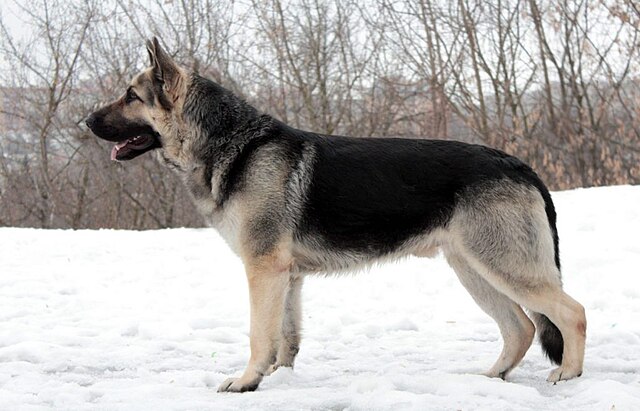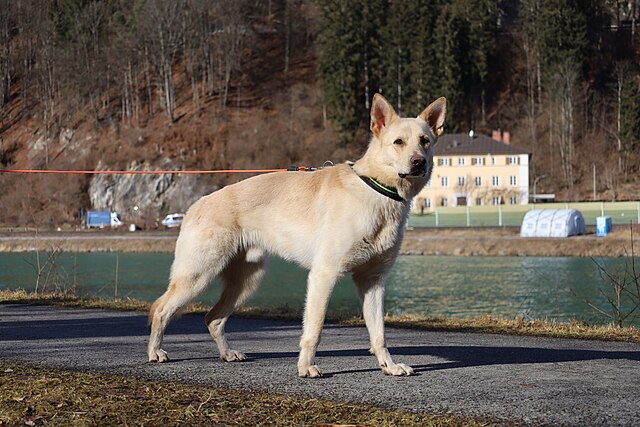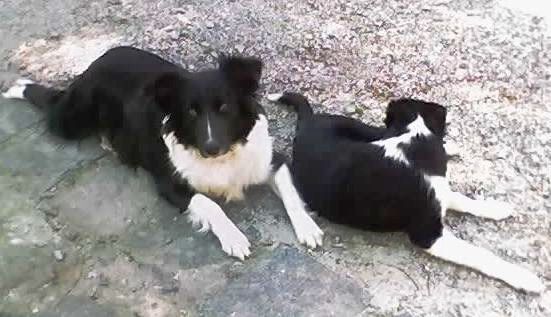The Shiloh Shepherd was officially recognized in the rare breed registries (not AKC) as an American breed in 1990. This fairly new breed was built in an effort to preserve “the German Shepherd of the past” in terms of character. Breeders sought to retain a protective dog that could be trustworthy with the family while possessing immense intelligence and supreme loyalty. A giant size was also important as these dogs needed to be just as stunning physically as they were mentally sound. The breed was to be gentle and calm while still possessing an ability to do all kinds of work – everything from competition obedience to therapy work to protection duties. Some members of the breed compete in agility, schutzhund, tracking, conformation, flyball, water rescue and herding competitions while others are employed as search and rescue dogs, detection dogs, livestock guardians or service dogs.
Training a Shiloh Shepherd is usually easy as he enjoys learning and having a sense of purpose. This talented dog needs a job to do and obedience training can function as a job in itself, or can be the first step to teaching the dog other jobs! Experienced dog owners are usually better able to provide the right types of mental stimulation needed, and are better able to navigate the sensitive side of this gentle giant.
Shilohs need exercise daily, and although they do best living inside the home with their family, they should also have a backyard to play in regularly. They need both physical as well as mental stimulation to keep their bodies and minds sharp! Running alongside a bike, trekking along on a hike, or chasing a Frisbee are all activities which the Shiloh enjoys. Although they are fairly calm indoors with proper exercise, it is a bad idea to keep one in an apartment. As the breed also lives to be around people, they don’t do well when left home by themselves all day and may turn into problem barkers in such a situation.
The Shiloh has been bred with a high focus on health. There are several registries for the breed, but all require any breeding animals to have been tested for heart defects and hip abnormalities. Further health testing is highly recommended as well including more advanced heart tests, testing for Degenerative Myelopathy, elbows, eyes, thyroid and screening for EPI. No dogs are allowed to be bred before the age of a year (or two years in a couple of the registries) so that some age-related conditions might possibly be observed beforehand. Both breeders and owners are also encouraged to participate in an ongoing diversity study as well, which seeks to determine the COI (co-efficiency of inbreeding) of various lines and the breed overall so that good choices can be made for the future. Overall the breed tends to live from 11-14, which is not horrible considering the size of these dogs. 
Beyond health, the various Shiloh Shepherd registries also require all breeding dogs to have their DNA on file, be a minimum height (26 and 28 inches minimum for bitches and dogs, respectively), and pass a temperament test. Puppies themselves are also normally rated via temperament tests so that they can be best matched to prospective owners. Because temperament is a prime consideration of most breedings, it comes as no surprise that many easily pass CGC and other temperament tests when older. This breed is generally outgoing and friendly. They usually have a more gentle and laid-back demeanor than their GSD relatives.
When it comes to appearance, the Shiloh comes in one of two possible coat types – smooth (short) and plush (long). Neither variety should be shaved or otherwise trimmed, but naturally longer areas of the coat will appear along the neck and shoulders and behind the breeches and tail. Both varieties are double-coated and should be somewhat harsh, although the plush coats will have soft undercoat underneath the outer guard coat. Colors include a black saddle or blanket combined with tan, red, beige, gold, silver or cream. Bi-colors can appear in these same color combinations. Sables, solid blacks and solid whites are also seen. Although closely related to the German Shepherd, they have a more level topline and are drastically bigger.
The Shiloh Shepherd does well with children although should be socialized with them from puppyhood for best results. The same can be said for the Shiloh with other household pets. Stability and adaptability are two key features that the breed is known for, so as long as the owner raises the dog correctly it is very likely that there will be good results! Both aggression and shyness are severely penalized in the breed standard. Overall he can do just as well living with a single owner as he can do with a large family, assuming the groundwork of training has been laid and the dogs’ needs are met. Although designed to be a multi-functional breed, the single most important purpose was to be a loyal companion and this is a job he does well!



